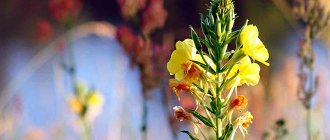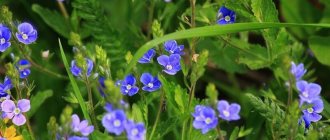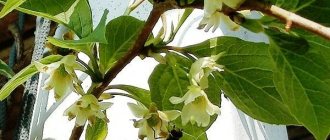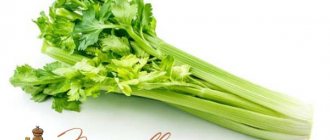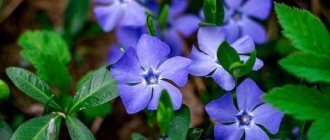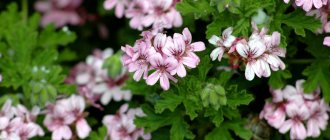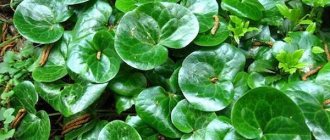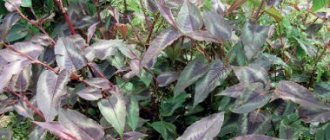Species of flowering plants in the family Polygonaceae
| Bistorta officinalis | |
| Scientific classification | |
| Kingdom: | Plantae |
| Clade : | Tracheophytes |
| Clade : | Angiosperms |
| Clade : | Eudicots |
| Order: | Carnations |
| Family: | Polygonaceae |
| Genus: | Bistorta |
| Variety: | B. officinalis |
| Binomial name | |
| Bistorta officinalis Delarbre [1] | |
| Synonyms [1] | |
| |
Bistorta officinalis
Large serpentine
(synonym
Persicaria serpentine
), known as
turtledove
,
common turtledove
,
European turtledove
or
meadow turtledove
, is a species of flowering plant in the dock family Buckwheat native to Europe and northern and western Asia.
[1] Other names include the common SnakeRoot
,
SnakeRoot
,
snakeweed
, and
Easter ledges
.
Description
Bistorta officinalis
is a perennial herbaceous plant growing to 20-80 cm (8-31 in) tall and 90 cm (35 in) wide. It has a thick, twisted rootstock, which probably gives it its common name snake. The foliage is usually basal, with several smaller leaves produced near the lower end of the flowering stems. The leaves are usually glabrous; basal elongated oval with long winged stems and round or heart-shaped bases; the upper ones are few in number, triangular in shape, pointed, stemless. At their base there are stipules that are fused into a sheath surrounding the stem. The petioles are broadly winged. The inflorescence is spike-shaped. The plant blooms from late spring to autumn, producing tall, erect, unbranched and hairless stems ending in single terminal racemes that resemble club-shaped spines, 5–7 cm (2–3 in) long, rose-pink flowers. [2] The individual flowers are pink with five perianth lobes, eight stamens, three fused carpels and three free forms. The fruit is a glossy black walnut. Flowering occurs in June-July. [3] The plant grows in moist soils and goes dormant in dry conditions, losing its foliage until sufficient moisture is available again.
Growing
Snake knotweed
The easiest way to grow knotweed is from rhizomes brought from natural thickets in early spring or late autumn. Planted in fertile soil and without weed competition, the plants grow quickly. They are much larger and more spectacular than in the meadow. It is preferable to choose a damp area, maybe even slightly shaded.
Care consists of weeding and, if there is a lack of moisture, watering. The roots can be harvested for medicinal use starting from the third year after planting. It is better not to dig up the whole plant, but only separate half. Then the beauty will be preserved and valuable raw materials will be collected.
Taxonomy
The genus placement of this species has changed historically since it was placed in Polygonum
or
Persicaria,
but now accepted as
Bistorta
. [4]
Etymology
Latin name for serpentine
from
bis
("twice") +
torta
("twisted"), refers to the twisted appearance of the root.
Numerous other vernacular names have been recorded for the species in historical texts, although none are used to any extent. Many of the following apply to using the plant to make puddings:
|
|
|
Notes[ | ]
- For the convention of indicating the class of dicotyledons as a superior taxon for the group of plants described in this article, see the section “APG Systems” of the article “Dicotyledons”.
- Large encyclopedic dictionary of medicinal plants, 2015, p. 174, ISBN 978-5-299-00528-8
- ↑ 1 2 3 4 5 6 7 8 9 10 11 12 Gubanov I. A. et al.
Wild useful plants of the USSR / resp. ed. T. A. Rabotnov. - M.: Mysl, 1976. - P. 110. - 360 p. — (Reference books for geographers and travelers). - Serbin A.G. et al.
Medical botany. Textbook for university students. - Kharkov: NUPh Publishing House: Golden Pages, 2003. - P. 138. - 364 p. — ISBN 966-615-125-1. - Blinova K. F. et al.
Botanical-pharmacognostic dictionary: Reference.
allowance / Under (inaccessible link) ed. K. F. Blinova, G. P. Yakovleva. - M.: Higher. school, 1990. - P. 180. - ISBN 5-06-000085-0. Archived copy (unspecified)
(inaccessible link). Access date: September 4, 2012. Archived April 20, 2014.
Uses
It has also been traditionally used for medicinal purposes. The roots are rich in tannic and gallic acids, and both they and the leaves have been used to treat wounds. [3]
In Northern England, the plant was used to make a bitter pudding during Lent from a combination of leaves, oatmeal, eggs and other herbs. It is the main ingredient in dock pudding or Easter Ledge pudding. [8] Bistort root can be used to produce an astringent that has been used medicinally. The roots are also eaten in Russia and Northern Asia. [9]
Snake knotweed (Polygonum bistorta L.)
Snake knotweed (Polygonum bistoria L.)
A flock of crayfish came out onto the meadow,
And each one has a “boot” in the shape of a thick snake.
Common names: crayfish necks, serpentine, wine root, cauliflower grass, makarishino root, wild buckwheat, crayfish, ovary root, gourd, crab-grass, grass grass, pagan, heart root, mold, etc.
Summer has just come into its own. The forest became full of greenery. Coppices, forest meadows and clearings are full of bright and delicate colors of flowering herbs. Everyone around is singing and rejoicing. A walk, even early in the morning, through the forest at this beautiful time is a true pleasure. You slowly descend to a floodplain meadow from a small hillock overgrown with young pine trees. A fabulous sight opens up to your eyes: the transparent fabric of the morning fog seems to be pierced by many pointed, slender stems with pink heads, similar to Gothic spiers. For sure, a “pink” island among a green, damp meadow, which appeared as if from underground, surfaced from the bottom of a magical lake. And it seems that the “invisible city of Kitezh,” once hidden from the eyes of the Tatar-Mongol horsemen and immersed under the ringing of bells at the bottom of a deep, light lake, suddenly came to life and rose above the ground to show people its unique ancient architecture and pristine modest beauty. You come closer, and in the fabulous thickets you recognize a mysterious grass - snakeweed (serpentine grass), or crayfish necks.
It is a herbaceous perennial with a thick, slightly flattened, serpentine-curved, lignified rhizome, with many small roots, dark red on the outside, brownish-pink at a fresh break. The stems are numerous or solitary, simple, six-node, erect, arched, 30-100 cm high, fused with sockets. The leaves are alternate, oblong or oblong-lanceolate with a slightly wavy edge, wedge-shaped or slightly heart-shaped at the base, glaucous below, short-haired, glabrous above. Basal and lower stem leaves with long winged petioles. Small pale pink flowers with membranous bracts are collected in a large, dense, densely cylindrical inflorescence - a spike, located at the top of the stem. It blooms in late May-June, the fruits ripen in July. The fruit is an ovoid, triangular, shiny, dark brown nut; the weight of 1000 nuts (“seeds”) is 3-5 g. The serpentine tree reproduces by seeds and vegetatively. With the first method, it blooms mainly in the 3-4th year; in the second case (small daughter rhizomes or root segments) - on the next one. The yield of three-year-old plants is up to 17 t/ha of raw rhizomes. It is introduced into culture as a medicinal. It is found everywhere from the Far North to the steppe expanses of Russia. Distributed in the forest zone of the European part of Russia and Western Siberia, as well as in the tundra zone. In the Caucasus, Central Asia, Eastern Siberia and the Far East it is replaced by related species. Very abundant in subalpine meadows, for example in the Urals. It usually grows in thickets, in flooded meadows, grassy swamps, swampy banks of reservoirs, in ditches, damp low-density spruce forests, on wet edges and forest clearings. A good honey plant. The scientific name of the genus Polygonum comes from the Greek words poly - “many”, gony (gonatos) - “knot”, “knee”, which indicates the multi-articulation of the stem. The specific definition of bistorta from Latin is “twice twisted” (based on the appearance of the rhizome).
Only the rhizomes of the plant, which are usually located deep in the ground, are used for medicinal purposes. They are harvested in the fall (September-October) after the above-ground parts die off, or in early spring (April) before the greenery grows, and not entirely, but with at least 1/4 of the individuals left standing. They dig with shovels or diggers, shake off the soil, remove the above-ground part with knives, wash the roots in cold water and then cut off the rotten parts. After the raw material has dried in the air, it is dried in attics or under sheds with good ventilation, spread in 1-2 layers on paper, fabric or sieves. With slow drying, the rhizomes inside turn brown and mold. According to OST NKVT 7904/367, GF-X, the raw material consists of slightly flattened, heavy and hard rhizomes 2-10 cm long and 1-2 cm thick with transverse ring thickenings and traces of roots. The outside of the rhizomes is dark red with a brown tint, the inside is brownish-pink. There is no smell, the taste is very tart. Humidity is not higher than 13%. In raw materials allowed, no more than (in%): dark and blackened rhizomes - 10, rhizomes with roots and individual roots - 5, organic impurities - 0.5, mineral - 1. The tannin content must be at least 15%. The yield of dry raw materials is 25%. It is packaged in bales weighing 100 kg and stored in dry, well-ventilated areas on racks. Shelf life - 6 years. The rhizomes contain tannins (up to 25%), gallic acid (0.4-0.5%), catechin (0.5%>), starch (26.5%), calcium oxalate, carotene, vitamin C, glucose and organic acids; the leaves contain tannins and flavones, vitamin C and trace elements (chrome, manganese, iron, aluminum). The red knotweed (subspecies), which grows in large numbers in the Caucasus in the alpine and subalpine zones (from 1500 to 3500 m above sea level), is also used in medicine.
The snake knotweed has many popular names. It is called the serpentine because of its curved rhizome, like a snake. In some areas the plant is called crayfish. Why? Take a close look at its rhizome: it is slightly flattened and has transverse ring-shaped thickenings, reminiscent of the tail part of the crayfish - the neck. In connection with this name of the mountaineer, a curious case is known. The rural pharmacy received the task of procuring the rhizomes of the serpentine. An announcement was posted: certain types of medicinal herbs, including cancer cervixes, are accepted from the population. Soon a line of children with buckets stretched from the river to the pharmacy. They contained real cancer necks. It was not easy to explain to the children that something completely different was required...
In medical practice, rhizomes containing 15-25% tannins are used, which are distinguished by their mild effect on the mucous membranes. In the last century, in Russia, as well as in the countries of Europe and Asia, the medicinal properties of snakeweed were not known and the roots of ratania, growing in South America at the foot of the Cordillera, were widely used. And only in 1905 in Russia it was proposed to replace these imported raw materials with serpentine rhizomes. Nowadays you will no longer find an “overseas guest” in our pharmacies; his place rightfully belongs to cancer cervixes. The extracts and decoctions obtained from them (10 crushed roots per glass of boiling water) are used as a strong astringent for intestinal disorders, inflammation of the mucous membranes and bladder diseases; externally - for rinsing the mouth for stomatitis. Serpentine rhizomes are successfully used for acute intestinal disorders (enteritis, colitis) in children from 2 to 14 years old. After cleansing the intestines with a laxative, they are given a 3% infusion of a tablespoon 3 times a day before meals; no side effects are observed. People use a decoction of the roots and rhizomes for peptic ulcers of the stomach and duodenum, diarrhea, stones in the gall and bladder; infusion - for rinsing for toothache and baths for wounds and ulcers, and powder - as a powder for bleeding, tumors and abscesses. For diarrhea and dysentery, take powder from the rhizomes, 0.5-1 g 3 times a day; for cholelithiasis and urolithiasis - a decoction (20 g of water, boil for 20 minutes) 1-1.5 glasses a day while following a diet with limited meat, fish and spicy foods. In cases of stomach, intestinal bleeding and catarrh of the large intestines, drink every 2 hours a tablespoon of a decoction from a mixture of: 5 g of serpentine powder and a teaspoon of flax seeds per 200 g of water. Lotions are made from the decoction of the serpentine (15 g of rhizomes per 0.5 l of water). Snakeweed is non-toxic and is included in astringent stomach teas. Preparations from its rhizomes used in official medicine are tanialbin and tansal. In Bulgaria it is used for catarrh of the gastrointestinal tract, dysentery, and heavy menstruation. Drink an infusion (2 teaspoons of crushed rhizome per glass of boiling water - a dose for 1 day for adults and 2 days for young children) or an alcohol extract (20-50 drops 3-4 times a day) with a small amount of water. They use it to rinse the mouth and throat in case of inflammation of the mucous membrane, wash wounds, and do douching for leucorrhoea (the infusion for external use requires 2 times more raw materials).
Crayfish necks are nutritious food. On pastures, plants are eaten by sheep and cows, but for some reason horses avoid this grass. But deer in the North are very fond of knotweed and pluck leaves and flowers. Its seeds are a delicacy for bears. And not only bears, domestic chickens do not refuse shiny nuts either. Young serpentine leaves are suitable for food - for spring salads. Plant rhizomes can be used as raw materials to obtain black and yellow dyes for cloth; Previously it was used for tanning leather. The reserves of raw materials are large, but due to the drainage of swampy meadows, forests, and river floodplains, they are rapidly decreasing.
This should be taken into account when carrying out reclamation activities on forest and agricultural lands and prevent the depletion of the knotweed thickets. It must be remembered that repeated procurement of raw materials from the same thickets should be carried out no more than once every 8-12 years. Take care of cancerous necks, do not tear them in vain, follow the rules for preparing these healing miracle roots.
Article rating
Interesting:
Snake knotweed (Polygonum bistorta L.), part 2
Bird knotweed (Polygonum aviculare L.)
Polygonum persicaria L.
Pepper knotweed (Polygonum hydropler L.)
Index to the use of plants in medicine
Clubmoss (Lycopodium clavatum L.)
References
- ^ abc "Bistorta officinalis Delarbre". Plants of the world online
. Royal Botanic Gardens, Kew. Retrieved March 1, 2019. - RHS AZ Encyclopedia of Garden Plants
. UK: Dorling Kindersley. 2008. p. 1136. ISBN 978-1405332965. - ^ ab "Bistort: Bistorta officinalis". NatureGate. Retrieved December 30, 2013.
- Schuster et al., 2015.
- this name is also used for Rumex Patientia
- "Bistorta officinalis (meadow bistort)". Go to botany
. New England Wildflower Society. Retrieved December 30, 2013. - https://apps.rhs.org.uk/plantselector/plant?plantid=3789
- ↑
Easter-Ledge or Dock Pudding - Historical Products Archived June 24, 2011 at the Wayback Machine - Pieroni, Andrea (2005). Prance, Ghillian; Nesbitt, Mark (ed.). Cultural history of plants
. Rutledge. paragraph 35. ISBN 0415927463.
Distribution and habitat[ | ]
Widely distributed in the tundra, forest belt and steppe zone in regions with a temperate climate throughout the Northern Hemisphere, including in the European part of Russia and Siberia.
It forms thickets in swampy peat and damp floodplain and watershed meadows, along the banks of reservoirs, and is found in forest clearings and bush thickets.
It reaches its greatest abundance on moist soils rich in organic matter with a slightly acidic reaction, and tolerates close groundwater. Does not tolerate shade well[3].


